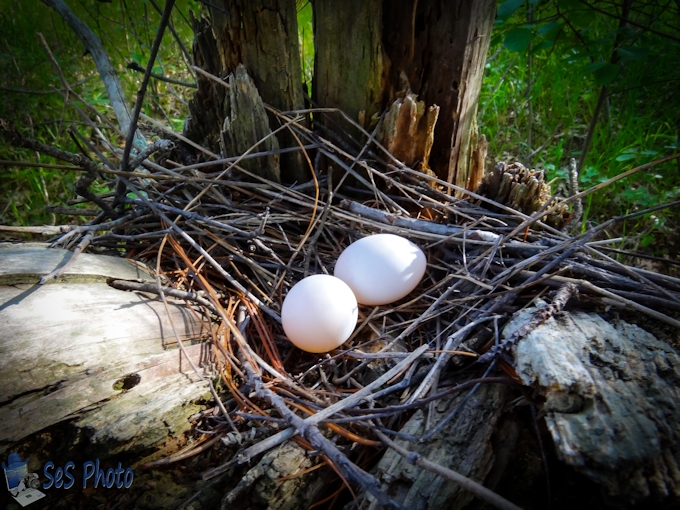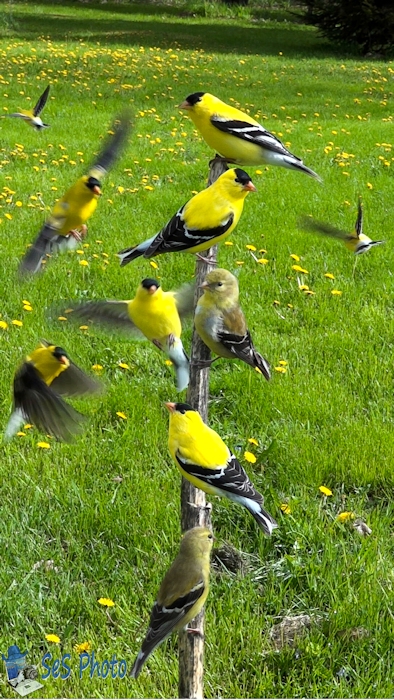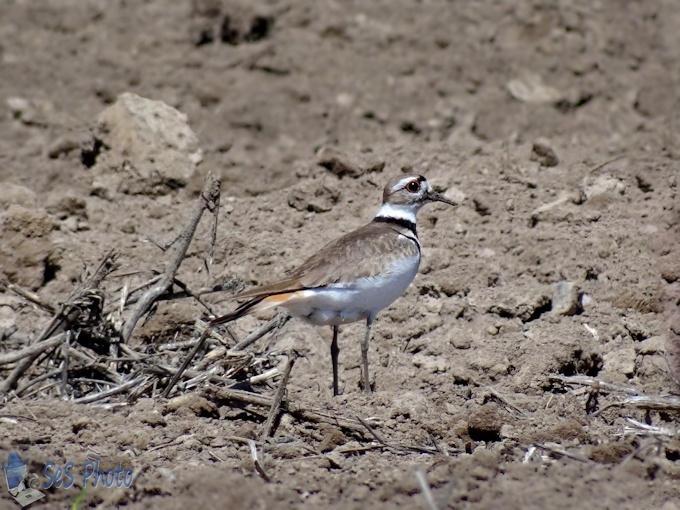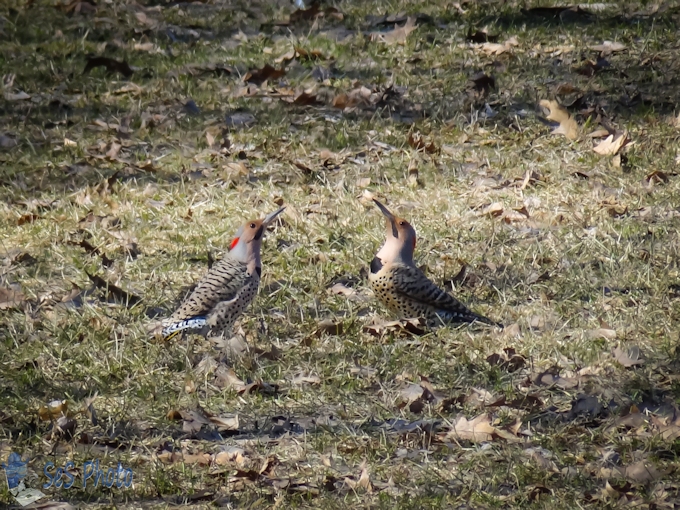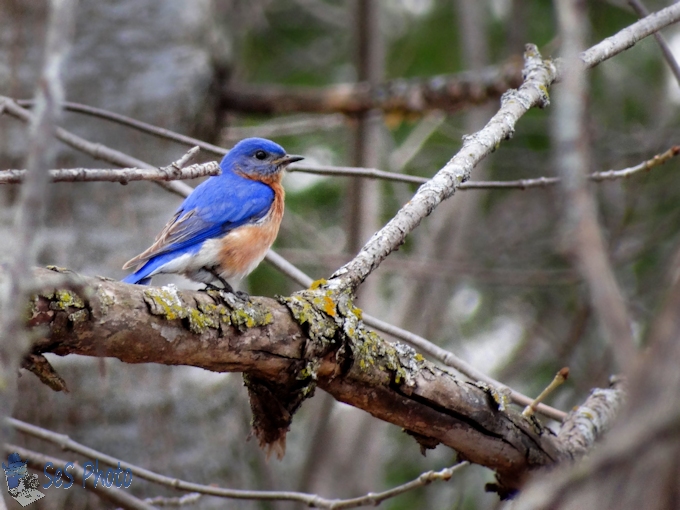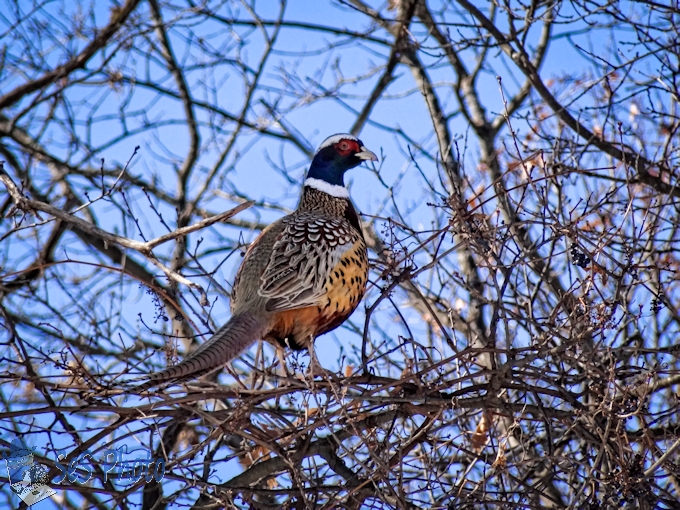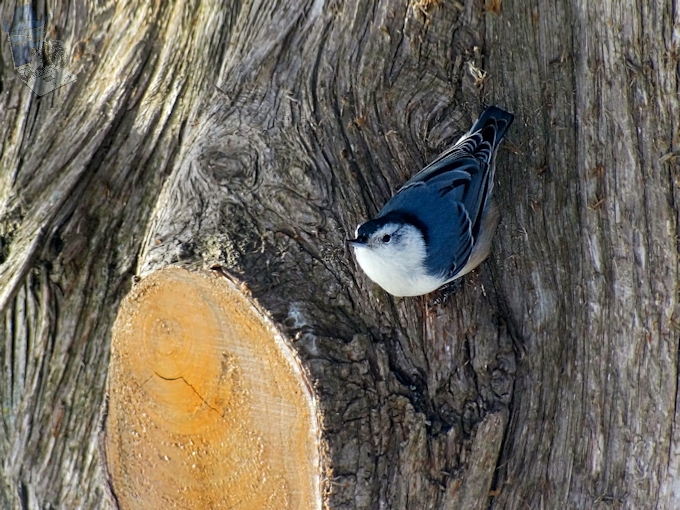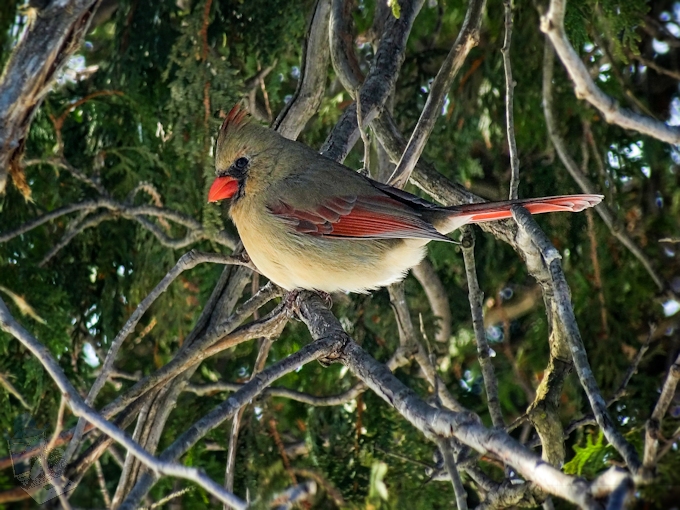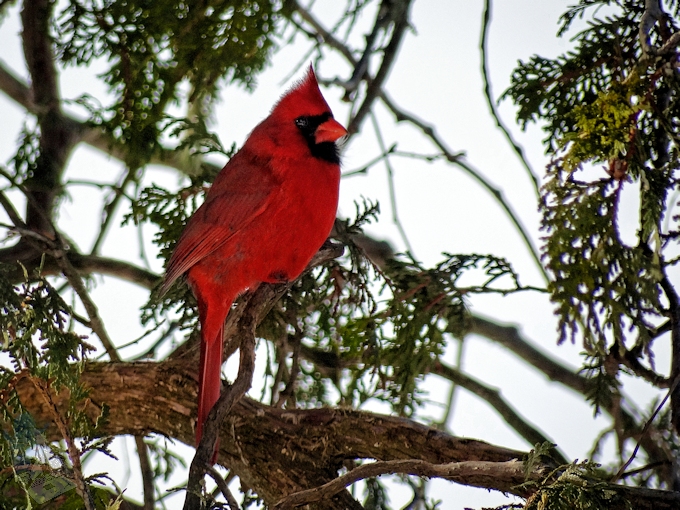Monday brings another start of a work week but the male Eastern Bluebird has his work done building a nest for his new family already. He brings a couple pieces of building material to the nesting box and goes in and out and fluttering his wings and catches the eye of a female to his nesting site. After that the female does all the work, building the nest with grasses and pine needles. I noticed the male would inspect her progress every once in a while and she would have to push him in the butt when he was blocking the hole while she was making her numerous trips for material. He even dropped a pine needle back outside after he went inside once and I wondered if he got scolded for messing up her work.
Male Bluebird Inspector



